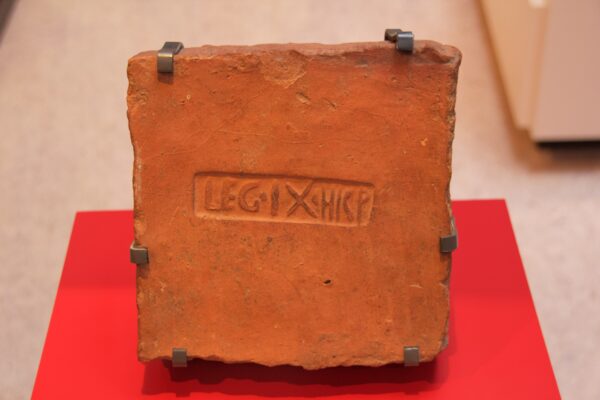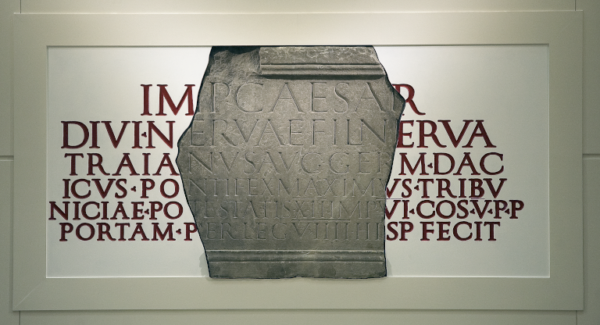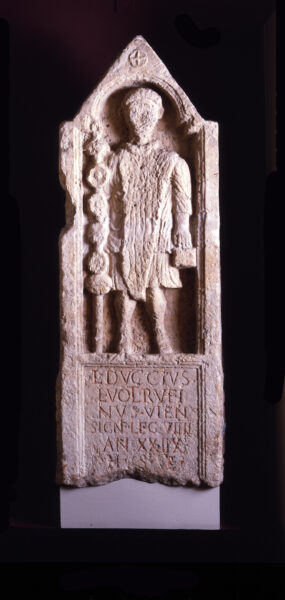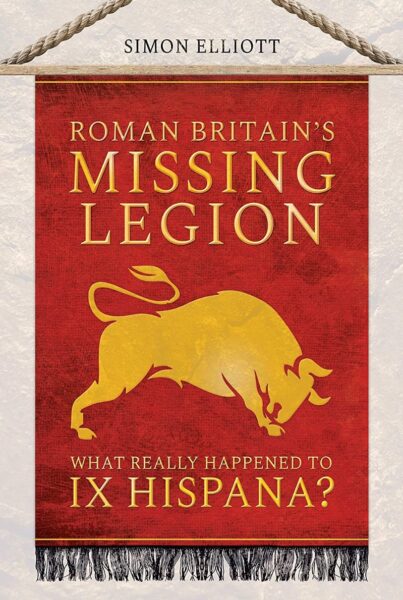
There seems to be a great deal of speculation about what happened to The Ninth legion as it moved northwards across England, and then into Scotland, to seeminly dissappear completely.
Four legions participated in the Roman invasion of Britain in AD 43: the Second, the Fourteenth, the Ninth and the Twentieth. The Ninth, originally raised by the Emperor Augustus, had been awarded the title Hispana for its bravery during the wars against the tribes in northern Spain. The full Roman name for this Legion was Legio IX Hispana.
By the early AD 70s the Ninth Legion had moved up from Lincoln to its new bases at York and Malton. Roman bricks and tiles were often stamped with the name of the legion supervising their production and, at York and Malton, complete examples (and fragments) have been discovered marked with the letters LEG IX HISP (Figure 1).
From Yorkshire the Ninth was involved in campaigns across the North and into Scotland. But its military reputation within Britain was far from outstanding, having been badly mauled by Boudicca`s troops in AD 61 (see previous blog: Petillius Cerialis and the Brigantes). Also, in his biography of his father-in-law, Julius Agricola, who was Roman governor in Britain during the Scottish campaigns, the Roman historian Tacitus explained how the Legion had been attacked as it was considered `the weakest point`.

After campaigning in Scotland, the Ninth returned to York as evidenced by an inscription discovered near the south-east gateway of the Roman Fortress (Figure 2) and translated as:
The Emperor Caesar Nerva Trajan Augustus, son of the deified Nerva, Conqueror of Germany, Conqueror of Dacia, pontifex maximus, in his twelfth year of tribunician power, six times acclaimed imperator, five times consul, father of his country, built this gate by the agency of the Ninth Legion Hispana.
This can be dated to AD 108 and, perhaps from the same period, was the tombstone of Lucius Duccius Rufinus, the standard bearer for the Ninth Legion (Figure 3).

However, after this the Ninth seems to have disappeared from the historical record, a mystery that has intrigued numerous individuals since the 18th century. It was replaced in York by the Sixth which travelled to the province with the Emperor Hadrian in AD 122 and no inscriptions referring to the Ninth have been found anywhere on Hadrian`s Wall. Moreover, the list of Roman legions on the Collonetta Maffei pillar in Rome (dated to AD 168) makes no mention of any Ninth Legion.
There are various theories surrounding the demise of the Ninth. Some argue that it left the province for the continent and finished its days fighting along the Rhine or the Danube. Certainly, some brick and tile stamps unearthed around Nijmegen imply that at least a detachment was deployed to the region sometime between AD 104 and AD 120.
Other historians believe the fate of the Ninth can be put down to redeployment in the East, with the Legion being sent to help quell the Second or the Third Jewish revolts in Palestine in AD 115 or AD 132. Others suggest that the Legion was destroyed in Armenia during Marcus Aurelius’ Parthian War. The Roman historian Dio Cassius stated that a Parthian army surrounded and annihilated an entire Roman unit during the conflict, but failed to name it.
The traditional view originally put forward by Theodor Mommsen in the 1850s was that the Legion was simply wiped out in action within northern Britain soon after AD 108, perhaps during a rising of the Brigantes against Roman rule. This view was further popularised in the 1954 novel The Eagle of the Ninth by Rosemary Sutcliffe that paints a picture of the Ninth Legion marching into the mists of Scotland, never to be seen again.

Dr Simon Elliott`s recent book (Figure 4) takes up the mantle from Mommsen arguing that the Legion was most likely lost in dramatic circumstances somewhere north of York. But echoing Rosemary Sutcliffe we now just need to find the location of the Ninth`s final stand and, if possible, their Eagle too!
Malton Museum are very excited to announce, that to celebrate our reopening, the first of our Summer Lecture series this season is a FREE online lecture, taking place on Wednesday May 26th at 7pm. Our guest will be renowned Archaeologist and author Dr Simon Elliott, who will talk about his latest book on the infamous ‘Missing Legion, Legio IX Hispana’.
Kemps of Malton & Whitby have some copies of this book in store, especially ordered for our lecture
For full details of this lecture, and to book: Roman Britain’s Missing Legion
Figure 1: Roof tile from York marked with LEG IX HISP. ©Yorkshire Museums Trust (Creative Commons)
Figure 2: Inscription from the Roman Fortress at York. ©Yorkshire Museums Trust (Creative Commons)
Figure 3: Tombstone of Lucius Duccius Rufinus, the standard bearer for the Ninth Legion. ©Yorkshire Museums Trust (Creative Commons)
Visit: York Museums Trust
Figure 4: Front cover of book by Dr Simon Elliott ©Dr Simon Elliott & Pen and Sword Books.
